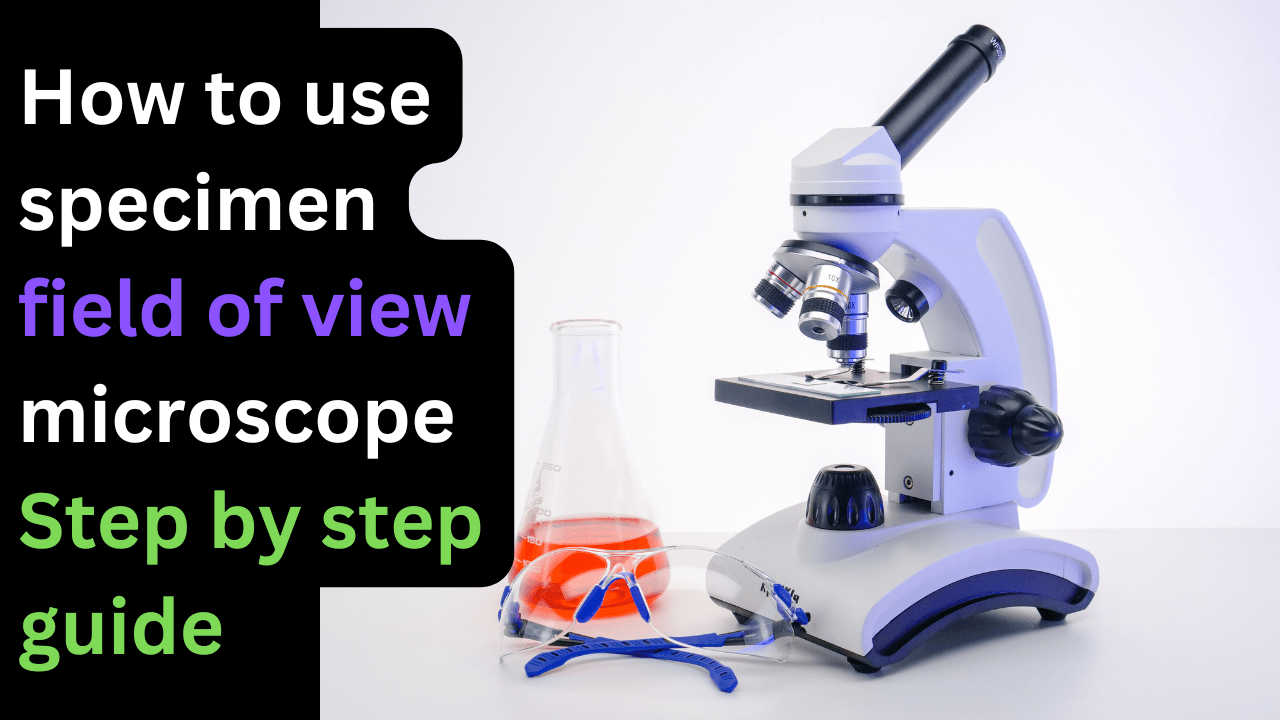Using the specimen field of view on a microscope involves understanding a key concept. This involves the area visible through the microscope’s eyepiece.
Here’s step by step guide how you can properly use specimen FOV microscope
Steps to Use Specimen Field of View (FOV) on a Microscope
- The Field of View is the circular area visible through the microscope lens at a specific magnification.
- NOTE: It decreases as magnification increases.
- Place the microscope on a stable surface. Turn on the light source.
- Place your specimen on a clean glass slide.Cover it with a coverslip to protect the specimen and the objective lens.
- Place the slide on the microscope stage.Secure it using the stage holder.
- Start with the lowest magnification objective (e.g., 4x or 10x). Rotate the nosepiece to bring the objective lens into position.
- Use the coarse adjustment knob to bring the specimen into focus. Use the fine adjustment knob for sharper focus.
- Look through the eyepiece to observe the entire field of view. Adjust the stage to center the part of the specimen you wish to study.
- Rotate to a higher magnification objective lens (e.g., 40x, 100x). Re-focus using the fine adjustment knob. Note that the Field of View decreases as magnification increases.
- Place a transparent ruler or micrometer slide under the lens. Count the millimeters visible in the FOV at a specific magnification.
- Use the diaphragm or light intensity controls to optimize brightness and contrast.
- Use a camera or draw diagrams of the specimen as it shows within the FOV.
Tips when using field of view in microscope
- Center the Specimen: Always center your specimen before switching to higher magnification.
- Oil Immersion (100x): For high-power objective lenses like 100x, use immersion oil as directed.
- Cleaning Lenses: Clean lenses with lens paper to ensure a clear view.
- Keep Track of Orientation: Use stage markings to keep track of where you are in the specimen.
